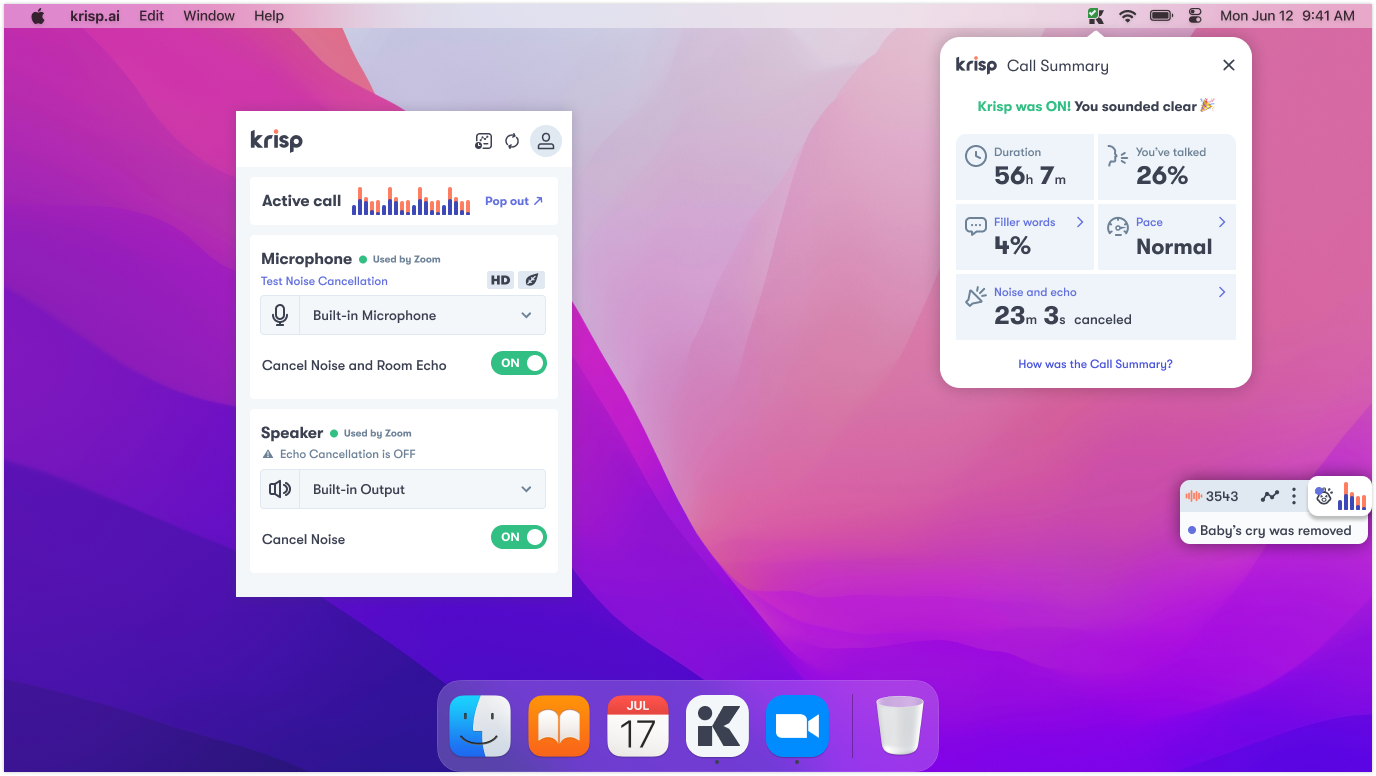Raising organizational maturity with product work
At Krisp, we had a clear ambition: to go beyond noise cancellation and improve the overall effectiveness of communication. However, our team lacked a consistent approach to discovery and product decisions that was needed to reach such ambitious goals. I used the opportunity of a new project to not only improve our product, but to also level up how we worked, raising the organizational maturity along the way.

We started with an end-of-call summary feature to test our hypothesis around providing real-time coaching. I set up a rapid-iteration process to continuously test for fit, feasibility, value, and usability with my product manager partner. My approach pushed us to work in parallel, making discovery a core, integrated part of our workflow and speeding us up. We extensively discussed all aspects of the solution at each step and collected data from users to validate our assumptions.

This collaborative model was a significant evolution from our previous process, where design came after a full product brief and were mostly focused on output, leaving outcomes an afterthought. Our new approach allowed us to rapidly explore open questions and get to quick solutions. We learned a great deal about our users and our technology, and while the product direction ultimately pivoted, our project directly contributed to the company’s understanding of how these new features would fit with the overall strategy.

This experience was a powerful lesson in my leadership philosophy. It proved that a well-designed process can be as impactful as a well-designed feature. By building the right team practices, we not only learned what our users needed, but we also learned to work more efficiently, setting a new standard for how the organization makes product decisions.
